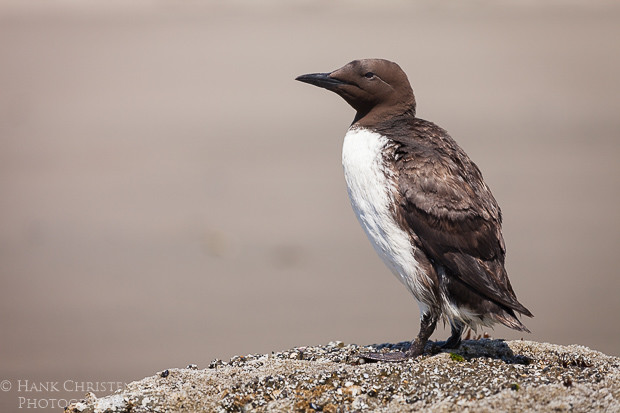
I photographed this common murre in Oregon on an early spring trip geared toward landscape photography. Although I did bring my wildlife lenses with me, I happened not to have them down on the beach the day I saw this little guy. My longest lens in my bag was a 70-200 on a full frame camera.
The common murre only comes to shore to breed, and this one can be seen in breeding plumage. Once these birds breed, both the male and female molt, rendering them flightless for one to two months. I’m not sure if this one had been through this molting yet, but he seemed quite content just to hang out on his rock.
After seeing this murre standing on a small rock, the first thing I did was creep around to the south to approach him with the sun at my back. This made the bird front lit, which is the typical lighting necessary to create a pleasing bird portrait. Once I had the angle of light correct, I began to creep toward my subject (partially to compensate for my short focal length I had available) in a low crouch. I moved very carefully, only creeping forward a few inches when he was looking away. As usual, I balanced my desire to get as close as possible with the bird’s comfort zone.
After taking several photographs at the distance with which I was comfortable, I backed up slowly the way I had come. It is always better to leave your subject undisturbed than to selfishly stand up after you have your desired shots and risk flushing the bird.
